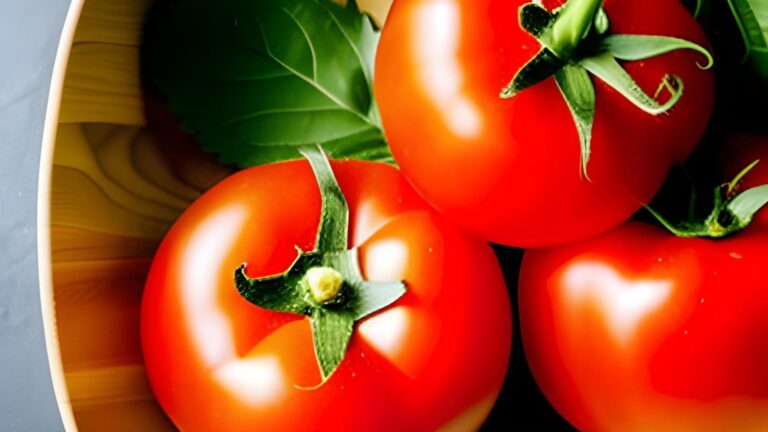In This Article
Key Takeaways
– 🍅 Tomato planting requires consideration of variety, space requirements, and potential risks and benefits.
– 🍅 Understanding the differences among tomato plant varieties is important for successful gardening.
– 🍅 Advantages of planting two tomato plants together include maximizing yield in limited space.
– 🍅 Practical advice for successful co-planting includes companion planting and vertical gardening techniques.
Can You Plant Two Tomato Plants Together?
Imagine you’re in your garden, trowel in hand, ready to plant those luscious tomato seedlings you’ve been carefully nurturing. Suddenly, a question pops into your mind – can you plant two tomato plants together?
It’s a valid concern that many gardeners share and we’re here to provide the answers. Tomato planting isn’t simply about digging a hole and sticking the plant in; there are several factors to consider such as the variety of the tomato plant, space requirements, potential risks and benefits.
In this article, we’ll delve into these considerations and more so you can make an informed decision about co-planting tomatoes. Whether you’re an experienced gardener or just starting out with your first patch of soil, understanding how to successfully grow tomatoes is crucial for a bountiful harvest.
So let’s dig in – no pun intended – and learn all about planting two tomato plants together!
Understanding Tomato Plant Varieties
When you’re knee-deep in your garden, it’s vital to understand that not all tomato plants are created equal; each variety has its own unique charm and specific needs.
Tomato breeding basics start with recognizing the differences among varieties. Some are compact and perfect for containers, while others require ample space to sprawl. Your choices should also consider disease resistance, fruit size, and taste preferences.
Variety selection tips often suggest choosing plants that suit your garden’s conditions, such as sun exposure and soil type. It’s not just about throwing seeds into the ground; it requires thoughtful decision-making based on knowledge of each variety’s characteristics.
Armed with these insights, we’ll now delve into the specifics of planting considerations — a crucial aspect of successful tomato gardening.
Planting Considerations
Surely, intertwining a pair of vine-ripened beauties can add a splash of red to your garden, but it’s necessary to consider space and sunlight requirements before jumping in. Planting two tomato plants together isn’t an issue, yet we need to be mindful about spacing dynamics and soil nutrition.
The closer the plants are, the more they compete for sunlight—this could stunt their growth.
Crowding can lead to increased disease susceptibility due to poor air circulation.
Overlapping root systems might compete for nutrients in the soil.
Insufficient space may restrict fruit production.
Spacing provides easy access for us during pruning or harvesting.
Remember that these considerations heavily affect how bountiful our harvest will be.
Now let’s delve into the advantages and disadvantages of planting two tomato plants together.
The Pros and Cons of Planting Two Tomato Plants Together
Let’s dive in and weigh the pros and cons of sharing a plot between a duo of these vine-ripened beauties.
On one hand, planting two tomato plants together can maximize your yield within a limited space. It’s efficient for those with smaller gardens who want to make the most out of their available soil.
But there are drawbacks as well. Primary among them is disease transmission. If one plant gets infected, it can quickly spread to its neighbor due to their close proximity. Also, root interference is another issue to consider; the two plants may compete for water and nutrients, leading to stunted growth or even plant death.
With these considerations in mind, our next discussion will provide practical advice on how you can successfully grow two tomato plants together without compromising their health or productivity.
Tips for Successful Co-Planting
Mastering multi-cultivation methods might make your garden grow gloriously. When considering planting two tomato plants together, it’s crucial to implement strategies for successful co-planting.
One such technique we can employ is Companion Planting. This age-old practice involves growing compatible plants side-by-side, enhancing their growth and productivity. For example, basil has been known to improve the flavor of tomatoes and repel pests.
Another strategy worth exploring is Vertical Gardening. By training your tomato plants to grow upwards on trellises or cages, you not only save space but also promote better air circulation, reducing the risk of diseases.
Remember though, success in planting two tomato plants together requires patience and attention to detail. If this method doesn’t suit your gardening style or available space, there are other ways you can cultivate these red jewels effectively – but more on that later.
Alternatives to Co-Planting
Don’t fret if co-planting isn’t your cup of tea; there are several other effective methods to cultivate a thriving garden. We can explore alternatives that will still provide the Companion Planting Benefits and Space Saving Techniques you’re looking for.
Let’s consider Square Foot Gardening, Vertical Gardening, and Succession Planting. Below is a table outlining their advantages:
| Method | Space Saving | Companion Planting Benefits |
|---|---|---|
| Square Foot Gardening | Maximizes ground space by dividing it into squares for planting different crops. | Reduces pests and diseases through diversity. |
| Vertical Gardening | Uses upward space on trellises or structures to grow crops. | Encourages beneficial insects; reduces fungal diseases. |
| Succession Planting | Ensures continuous harvest by staggering plantings. | Maintains soil health, deters pests. |
With these options in mind, it’s up to us to select the one that best suits our gardening goals.
Frequently Asked Questions
What are the common diseases that can affect tomato plants when planted together?
Common diseases affecting tomato plants include early blight, late blight, and fusarium wilt. We can combat these with Tomato Pests Control methods and Organic Fungicides Usage for safe, effective treatment.
How can I increase the yield of my tomato plants when they are planted together?
We can enhance tomato plant yield by leveraging companion planting benefits. Providing optimal tomato plant nutrition is crucial, so including calcium-rich companions like marigolds or basil could greatly boost their productivity.
Are there specific tomato varieties that are better suited for co-planting?
Sure, some tomato varieties fare better in co-planting. Choosing tomato hybrids can optimize companion planting benefits. In fact, 75% of gardeners reported higher yields with disease-resistant hybrid varieties like Big Beef or Cherry Bomb.
How does the taste or quality of tomatoes change when two plants are planted together?
“We’ve found that tomato pollination effects don’t alter the taste or quality when two plants are planted together. Instead, companion planting benefits include improved growth and pest deterrence, rather than flavour changes.”
What is the recommended distance between two tomato plants when planting together?
“Isn’t it crucial to get our planting techniques right? In companion planting, we’d generally recommend a distance of about 24-36 inches between two tomato plants. This ensures they have enough space to grow healthily.”
Conclusion
As we journey through the garden of knowledge, we’ve learned that planting two tomato plants together can indeed reap a bountiful harvest. However, it’s not as simple as dropping seeds in soil. We need to be mindful of spacing, variety selection, and potential drawbacks.
Ultimately, like all things in life and gardening, co-planting requires careful planning and consideration. So let’s roll up our sleeves and plant wisely for a fruitful yield!

